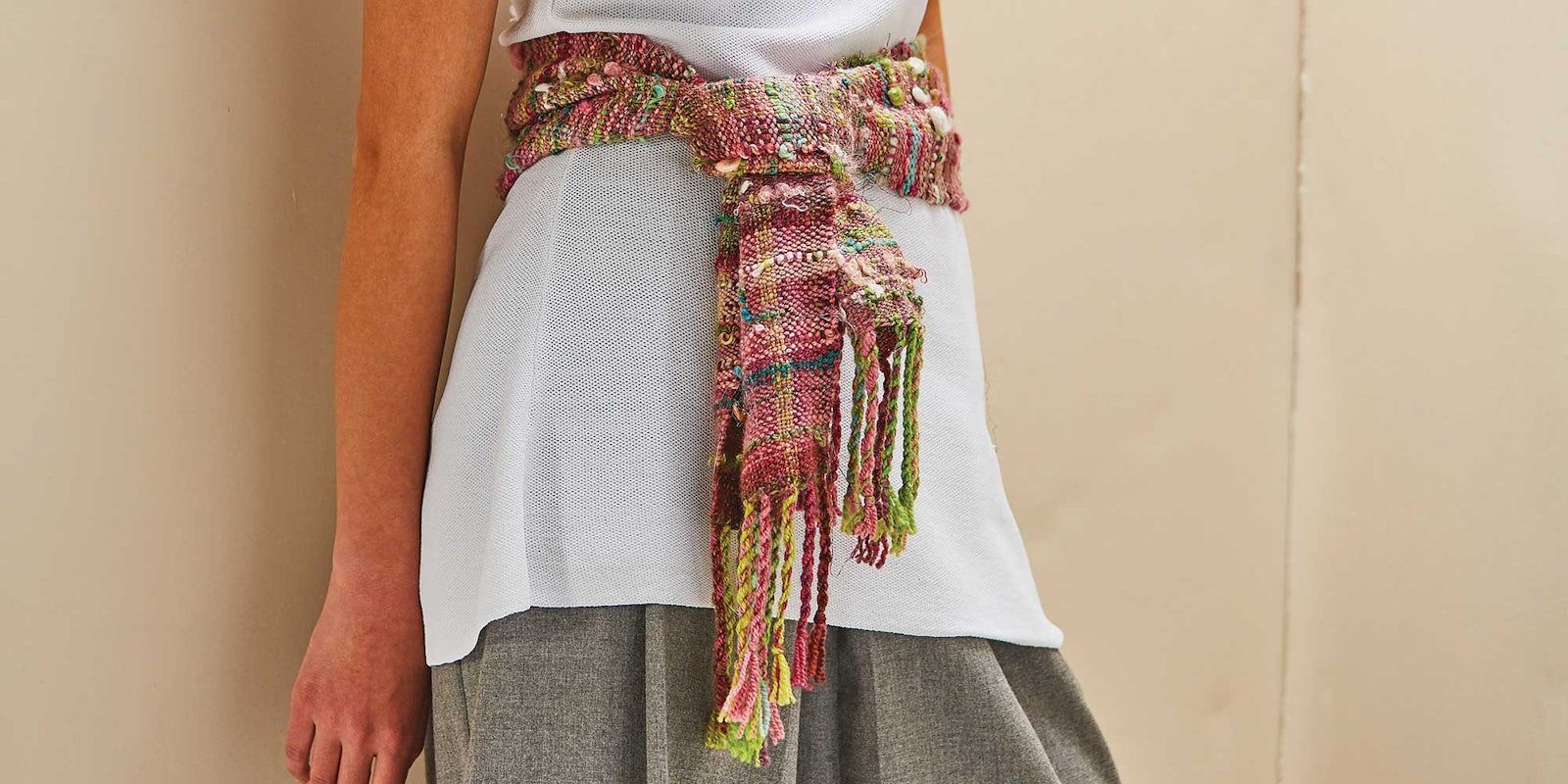Inspired by a piece of vintage fabric she saw online, spinner and knitter Sally Papin set out to create a one-of-a-kind piece of wearable art using some of her many balls of leftover yarn. Her handspun scarf features a variety of textures—silk and wool roving, Angelina fibers, sari silk, and recycled yarn—in addition to smooth yarns. Add in as much or as little texture as you like!
Sally prefers to use handspun that has not been superwash treated, allowing the yarns to full together during finishing. Sally creates a fringe by tying two groups of warp yarns together using two half hitches and then finger twisting them together. She then soaks the scarf in a bowl of hot water and dish detergent for 30 minutes, and gently swishes and squeezes the fabric so the fibers will interact. Rinse, wring, and roll in a towel, then lay it out to dry.
Below, Sally shares her tips for selecting yarns and her process for adding texture to this freestyle weaving project. Plus, All Access subscribers can log in for even more tips from Spin Off editor Kate Larson on choosing the types of handspun yarn that you could use to get the look. Download the PDF pattern for the “Pretty in Pink” scarf and get started!
 Use some of your leftover handspun yarn to make this one-of-a-kind piece of wearable art from scratch.
Use some of your leftover handspun yarn to make this one-of-a-kind piece of wearable art from scratch.
Design Notes from Sally
My handspun yarns are approximately DK-weight, and I choose to use handspun yarns that are not superwash. I want my finished scarf to be like my handknitted scarves and shawls with the same drape and feel. It's important that all the yarns full together to create that wonderful feel of the finished scarf.
I like to work with four to five shuttles loaded with the main colors. For this scarf, I used several pinks that were similar in hue and tone for the majority of the weaving. I also used a pile of texture materials that I added in as I wove, including silk roving, wool roving, sparkle fibers, and sari silk recycled yarn. Any texture that can be laid in while weaving will work as long as it's soft.
Laying in texture is quite a bit like painting a canvas. Your warp is your canvas and your shuttle paints and secures the added textures at random spots as you go. Let your eye guide you and put texture in as much or as little as you like. Remember, there are no rules with freestyle weaving. This laying in of texture is not a fast weave: manually place small lengths of textured yarn or fiber in the open shed, give the reed a gentle beat, follow with a shot of yarn, and then keep going. Even little 2- or 3-inch scraps are perfect for adding texture.
Project at a Glance:
Equipment needed: Rigid-heddle loom, 10" weaving width; 7.5-dent heddle; 4 or 5 stick shuttles.
Yarns: 2-ply handspun DK-weight wool yarn; handspun wool yarn in different colors and textures.

